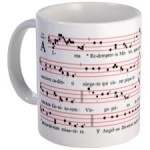NaBloPoMo Day 30!
I realized recently that I really need to remedy a particular gap in my musical knowledge: I can tell when a rhythm sounds “Latin,” but I couldn’t necessarily explain the difference between a rumba, and samba, a tango and a cha-cha-cha. It’s the kind of thing where I know it when I hear it, but I can’t define it precisely. (Kind of like obscenity! 😉 )
The reason it’s on my mind at the moment? Well, it’s a testament to my aversion to crowds that I’m at home tonight instead of at the movie theater clamoring to be among the first to see this movie. I’ll see it soon, don’t you worry — on a less-crowded weeknight, is all. 😀 Anyway, if you’ve watched the show, you’ll be familiar with its catchy theme music:
I’ve been trying to figure out exactly which Latin rhythm is being used here, and I was searching different rhythms online and consulting the music dictionary I have here at home, and lamenting the fact that I don’t have access to the Mother of All Music Dictionaries right now.
But then I realized, it may not conform to any particular traditional rhythm, since it was written by a couple of English dudes.
As such, I feel I’m within my rights to interpret it as I see fit. And the way I hear it, it combines the heavy accents and deliberate tempo of a tango with the bustling rhythmic energy of a samba. Thus, a tamba… or a sango… okay, let’s just call it Latin. 😉
Here are a couple of reference words I used to arrive at my brilliant analysis:
Tom Jobim: “One Note Samba”
Libertango from The Tango Lesson (Good film, btw!)
Hey, look! That’s Yo-Yo Ma playing cello in there! Pretty cool!

If you enjoyed this post, would you consider…
Thanks — you make the world a better place! 🙂





